Echinodorus angustifolius
Scientific name: Echinodorus angustifolius
Family: Alismataceae
Maximum size reached under cultivation: 5 - 30 cm (1.97 - 11.81 inch)
014
Recommended pH range: 5.7 - 7.4
Recommended water hardness: 4 - 18°dGH (71.43 - 321.43ppm)
0°C 32°F30°C 86°F
Recommended temperature range: 21 - 30 °C (69.8 - 86°F)
Preferred propagation method: Runners
Native to: South America
Growth rate: Normal
Recommended substrate: Gravel
Lighting requirements: Medium
Ideal placement in tank: Midground
Common Names
Narrow-Leaf Sword
Origin
Echinodorus angustifolius originates from South America, especially in Brazil’s tropical regions. It naturally grows along riverbanks and in wetlands, where it adapts well to both submerged and emersed conditions, making it a versatile choice for aquariums and paludariums.
Quick Overview
- Ideal For: Aquariums, paludariums
- Difficulty Level: Easy
- Lighting: Medium
Growing Conditions
Echinodorus angustifolius grows well when fully submerged in aquariums and can also thrive emersed in humid environments. With its narrow, grass-like leaves reaching up to 30 cm (11.81 inches), this plant is ideal for the middle of an aquarium, where it adds texture and height. It does best in a gravel substrate, which supports its root system, and prefers medium lighting for healthy growth. Though not demanding, it will grow faster and develop a more vibrant appearance under stable water conditions within the pH range of 5.7 to 7.4.
Planting Area
This plant is suitable for midground placement in most aquariums. It serves as an attractive focal point, providing a natural look with its long, slender leaves that sway with water movement. In larger aquariums, it can create a lush, layered effect when placed among other mid-sized plants.
Propagation
Propagation of Echinodorus angustifolius is straightforward. The plant reproduces through runners, which extend horizontally from the mother plant. These runners develop small plantlets that eventually produce their own roots. Once the plantlets are rooted, they can be separated and replanted elsewhere in the tank. This method allows the plant to spread naturally, and regular trimming helps manage its growth and prevent overcrowding.
Difficulty
Echinodorus angustifolius is an easy-to-grow plant suitable for beginners and experienced aquarists alike. It adapts well to a range of water conditions and requires minimal maintenance. The plant is generally undemanding but may show signs of iron deficiency if leaves start to yellow, so occasional fertilization with iron supplements can help keep it healthy.
Short Description
Echinodorus angustifolius, known as the Narrow-Leaf Sword, is a graceful plant with long, slender leaves that add texture and height to any aquarium. Its ability to grow both submerged and emersed makes it versatile, allowing aquarists to use it in aquariums, paludariums, and along pond edges. The plant propagates easily through runners, which makes it ideal for creating a dense, natural aquascape over time. Its hardy nature and adaptability make it a popular choice, while its minimal needs and easy propagation ensure it thrives with little effort.

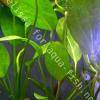 Echinodorus “Ozelot”
Echinodorus “Ozelot” Echinodorus “Red Flame”
Echinodorus “Red Flame”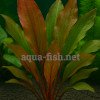 Echinodorus “Red Special”
Echinodorus “Red Special”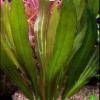 Echinodorus “Rubin”
Echinodorus “Rubin” Echinodorus “Tricolour”
Echinodorus “Tricolour” Echinodorus amazonicus
Echinodorus amazonicus Echinodorus bleheri
Echinodorus bleheri Echinodorus cordifolius
Echinodorus cordifolius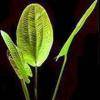 Echinodorus grandiflorus
Echinodorus grandiflorus Echinodorus horemanii
Echinodorus horemanii Echinodorus latifolius
Echinodorus latifolius Echinodorus macrophyllus
Echinodorus macrophyllus Echinodorus major
Echinodorus major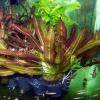 Echinodorus osiris
Echinodorus osiris Echinodorus parviflorus
Echinodorus parviflorus Echinodorus quadricostatus
Echinodorus quadricostatus Echinodorus schlueteri
Echinodorus schlueteri Echinodorus subalatus
Echinodorus subalatus Echinodorus tenellus
Echinodorus tenellus Echinodorus uruguayensis
Echinodorus uruguayensis Sagittaria graminea
Sagittaria graminea Sagittaria platyphylla
Sagittaria platyphylla Sagittaria subulata
Sagittaria subulata